

Schloss Vaduz
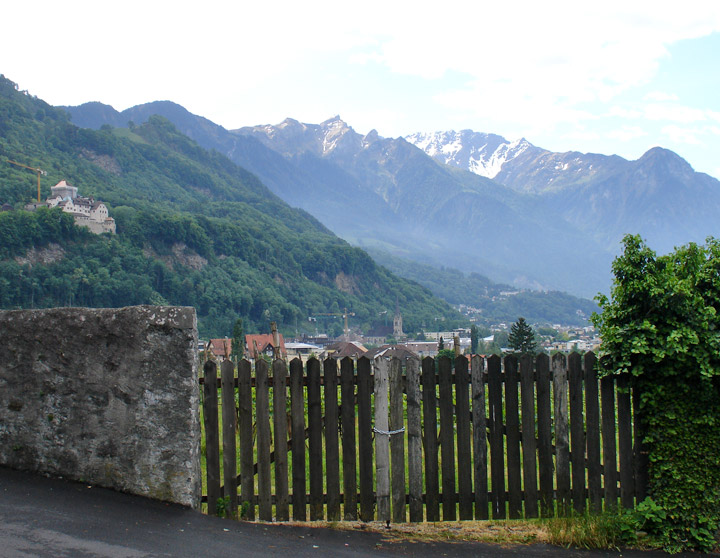
Schloss Vaduz, overlooking the capital, is still home to the princes of Liechtenstein
At one time, the territory of
Liechtenstein formed a part (albeit a diminutive one) of the ancient Roman
province of Raetia. For centuries this territory, geographically removed from
European strategic interests, had little impact on the tide of European history.
Prior to the reign of its current dynasty, the region was enfeoffed to a line of
the counts of Hohenems.
The Liechtenstein dynasty, from which the principality takes its name (rather
than vice-versa), comes from Castle Liechtenstein in faraway Lower Austria,
which the family possessed from at least 1140 to the thirteenth century, and
from 1807 onward. Through the centuries, the dynasty acquired vast swathes of
land, predominantly in Moravia, Lower Austria, Silesia, and Styria, though in
all cases, these territories were held in fief under other more senior feudal
lords, particularly under various lines of the Habsburg family, to whom several
Liechtenstein princes served as close advisors. Thus, and without any territory
held directly under the Imperial throne, the Liechtenstein dynasty was unable to
meet a primary requirement to qualify for a seat in the Imperial diet, the
Reichstag.

the castle
The family yearned greatly for the
added power which a seat in the Imperial government would garner, and therefore,
searched for lands to acquire which would be unmittelbar or held without any
feudal personage other than the Holy Roman Emperor himself having rights on the
land. After some time, the family was able to arrange the purchase of the
minuscule Herrschaft ("Lordship") of Schellenberg and countship of Vaduz (in
1699 and 1712 respectively) from the Hohenems. Tiny Schellenberg and Vaduz
possessed exactly the political status required, no feudal lord other than their
comital sovereign and the suzerain Emperor.
Thereby, on January 23, 1719, after purchase had been duly made, Charles VI,
Holy Roman Emperor, decreed Vaduz and Schellenberg were united, and raised to
the dignity of Fürstentum (principality) with the name "Liechtenstein" in honor
of "[his] true servant, Anton Florian of Liechtenstein". It is on this date that
Liechtenstein became a sovereign member state of the Holy Roman Empire.
Ironically, but as testament to the pure political expediency of the purchases,
the Princes of Liechtenstein did not set foot in their new principality for over
120 years.
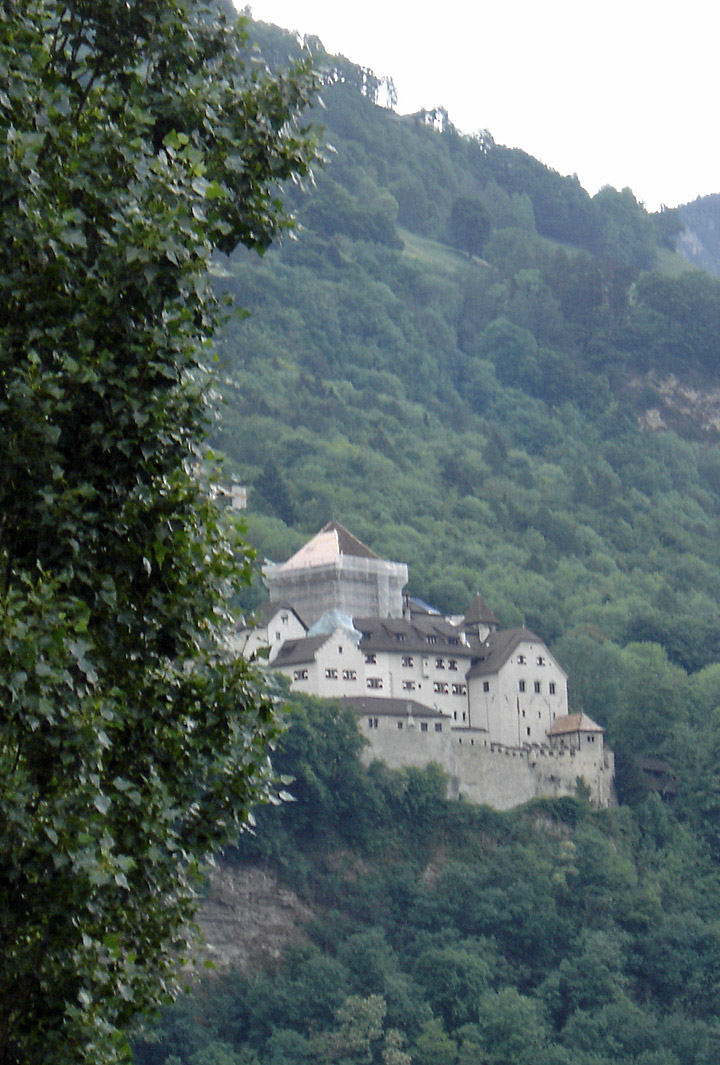
In 1806, most of the Holy Roman Empire was invaded by Napoleon I of the First
French Empire. This event had broad consequences for Liechtenstein: imperial
legal and political mechanisms broke down, while Francis II, Holy Roman Emperor,
abdicated the imperial throne and the Empire itself dissolved. As a result,
Liechtenstein ceased to have any obligations to any feudal lord beyond its
borders. Modern publications generally (although incorrectly) attribute
Liechtenstein's sovereignty to these events. In reality, its prince merely
became suzerain, as well as remaining sovereign lord. From 25 July 1806 when the
Confederation of the Rhine was founded, the prince of Liechtenstein was a
member, in fact a vassal of its hegemon, styled protector, French Emperor
Napoleon I Bonaparte, until the dissolution of the Confederation on 19 October
1813.
Then, in 1818, Johann I granted a constitution, although it was limited in its
nature. 1818 also saw the first visit of a member of the house of Liechtenstein,
Prince Alois, however, the first visit by a sovereign prince would not occur
until 1842.
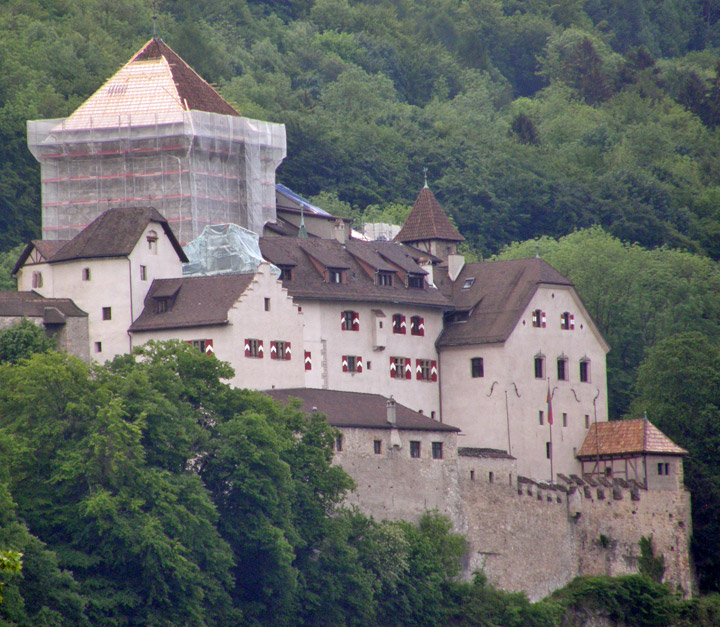
Soon afterward, Liechtenstein joined the German Confederation (20 June 1815 – 24
August 1866, which was presided over by the Emperor of Austria).
Liechtenstein also had many advances in the nineteenth century, as in 1836, the
first factory was opened, making ceramics. In 1861, the Savings and Loans Bank
was founded, as was the first cotton-weaving mill. Two bridges over the Rhine
were built in 1868, and in 1872 a railway line across Liechtenstein was
constructed.
When the Austro-Prussian War broke out in 1866 new pressure was placed on
Liechtenstein as, when peace was declared, Prussia accused Liechtenstein as
being the cause of the war through a miscount of the votes for war with Prussia.
This led to Lichtenstein refusing to sign a peace treaty with Prussia and
remained at war although no actual conflict ever occurred. This was one of the
arguments that were suggested to justify a possible invasion of Liechtenstein in
the late 1930s.
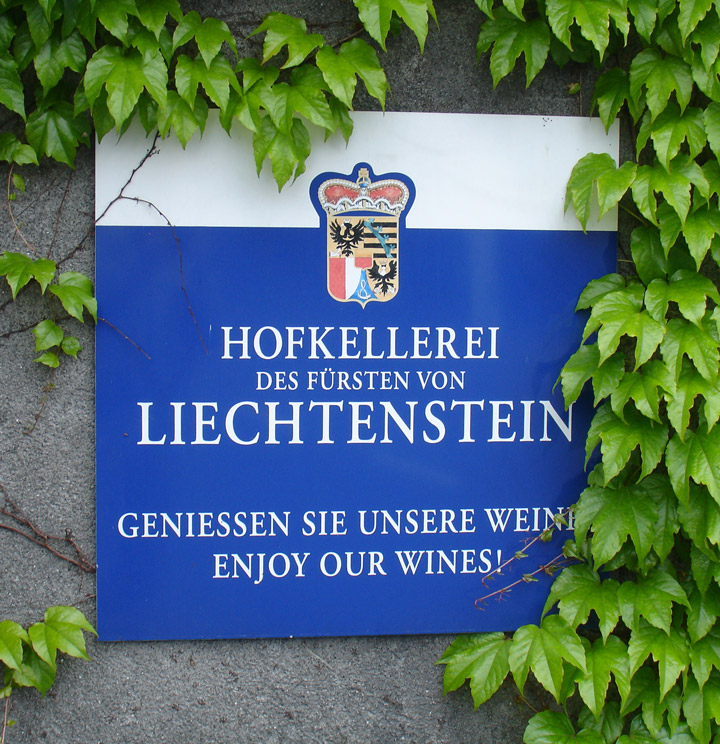
The Prince of Liechtenstein owns vineyards in Vaduz
Until the end of World War I, Liechtenstein first was closely tied to the
Austrian Empire and later, to Austria-Hungary; however, the economic devastation
caused by WWI forced the country to conclude a customs and monetary union with
its other neighbor, Switzerland. (Their Army had been disbanded in 1868, out of
financial considerations.) At the time of the dissolution of the
Austro-Hungarian Empire, it was argued that Liechtenstein as a fief of the Holy
Roman Empire (supposedly still incarnated in Liechtensteiner eyes at an abstract
level in the person of the then-dethroned Austro-Hungarian Emperor, despite its
formal dissolution in 1806) was no longer bound to Austria, then emerging as an
independent state, which did not consider itself as the legal successor to the
Empire. Liechtenstein is thus the last independent state in Europe which can
claim an element of continuity from the Holy Roman Empire.
In the spring of 1938, just after the annexation of Austria into Greater
Germany, eighty-four year-old Prince Franz I abdicated, naming his thirty-one
year-old third cousin, Prince Franz Joseph, as his successor. While Prince Franz
I claimed that old age was his reason for abdicating, it is believed that he had
no desire to be on the throne if Germany gobbled up its new neighbor,
Liechtenstein. His wife, whom he married in 1929, was a wealthy Jewish woman
from Vienna, and local Liechtenstein Nazis had already singled her out as their
anti-Semitic "problem". Although Liechtenstein had no official Nazi party, a
Nazi sympathy movement had been simmering for years within its National Union
party.
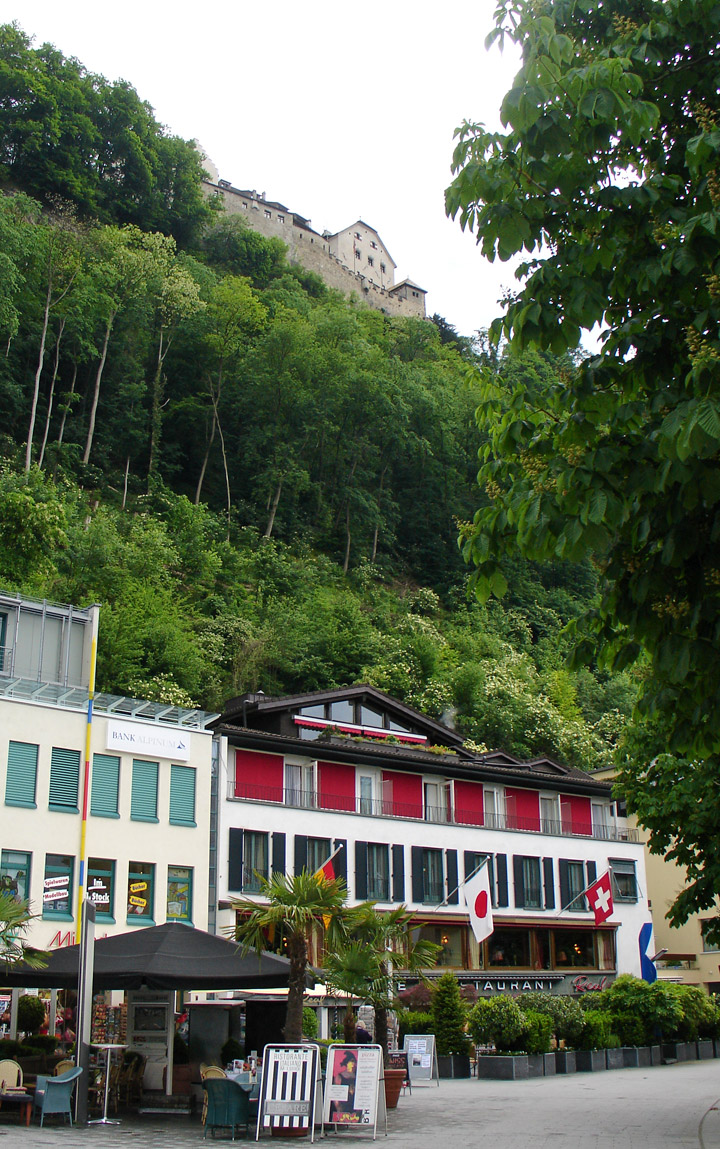
castle high above the main plaza
During World War II, Liechtenstein
remained neutral, while family treasures within the war zone were brought to
Liechtenstein (and London) for safekeeping. At the close of the conflict,
Czechoslovakia and Poland, acting to seize what they considered to be German
possessions, expropriated the entirety of the Liechtenstein dynasty's hereditary
lands and possessions in Bohemia, Moravia, and Silesia — the princes of
Liechtenstein lived in Vienna until the Anschluss of 1938. The expropriations
(subject to modern legal dispute at the World Court) included over 1,600 square
kilometres (600 mi.²) of agricultural and forest land, also including several
family castles and palaces. It is thus little wonder that during the decades of
the Cold War, citizens of Liechtenstein were forbidden by Czechoslovakia from
even entering that country. Liechtenstein gave asylum to approximately five
hundred soldiers of the First Russian National Army (a collaborationist Russian
force within the German Wehrmacht) at the close of World War II; this is
commemorated in a monument at the border town of Hinterschellenberg, and is
marked on the country's tourist map. The act of granting asylum was no small
matter as the country was poor and had difficulty feeding and caring for such a
large group of refugees. Eventually, Argentina agreed to permanently resettle
the asylum seekers. In contrast, the British repatriated similar groups of
Russian soldiers back to Soviet forces where they were all executed.
In dire financial straits following the war, the Liechtenstein dynasty often
resorted to selling family artistic treasures, including for instance the
priceless portrait "Ginevra de' Benci" by Leonardo da Vinci, which was purchased
by the National Gallery of Art of the United States in 1967. Liechtenstein
prospered, however, during the decades following, as its economy modernized with
the advantage of low corporate tax rates which drew many companies to the
country.
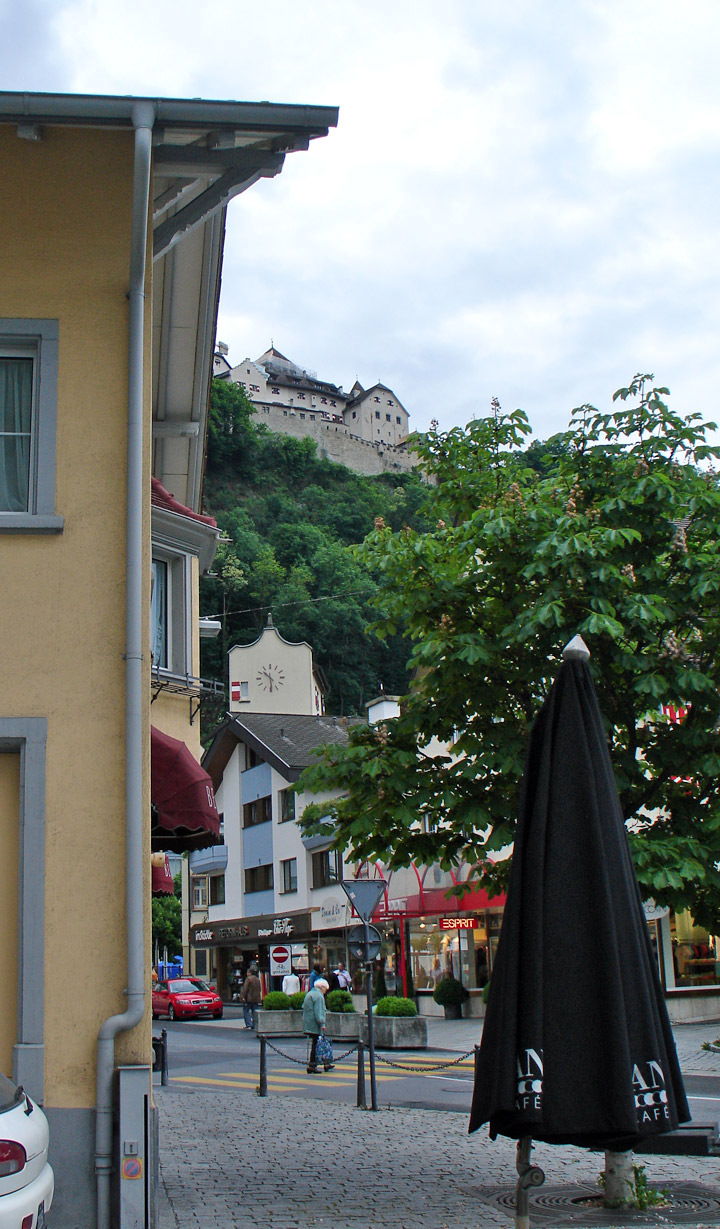
castle above the main plaza
The Prince of Liechtenstein is the world's sixth wealthiest head of state, with an estimated wealth of $4 billion. The country's population enjoys one of the world's highest standards of living.
Text from Wikipedia
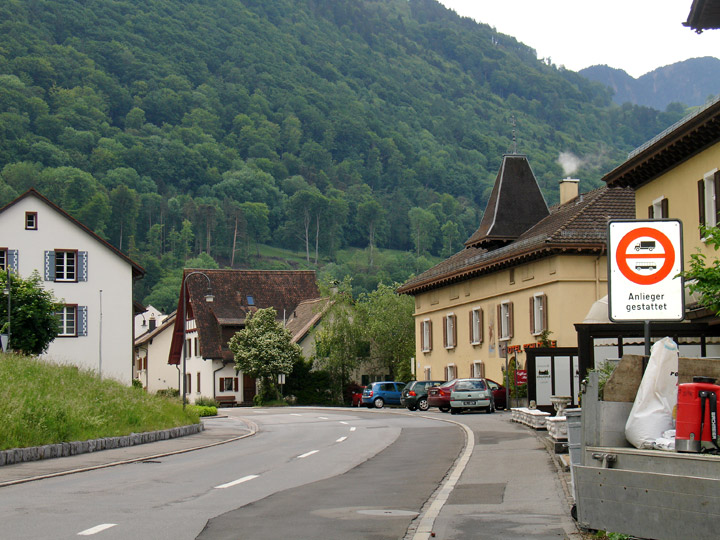
on the high road
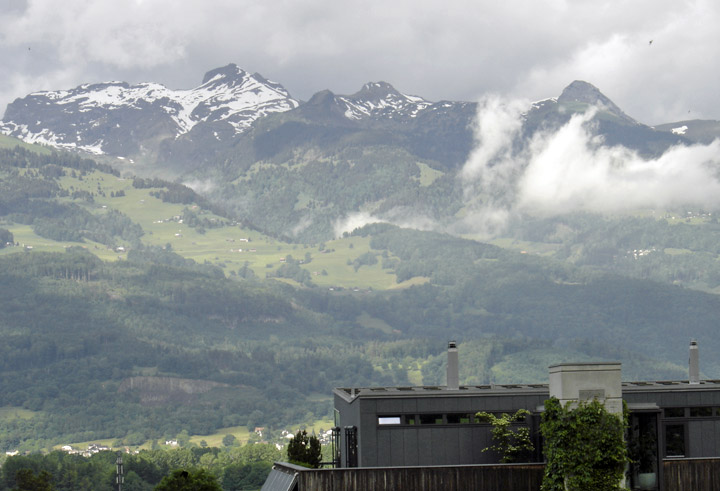
the mountains
